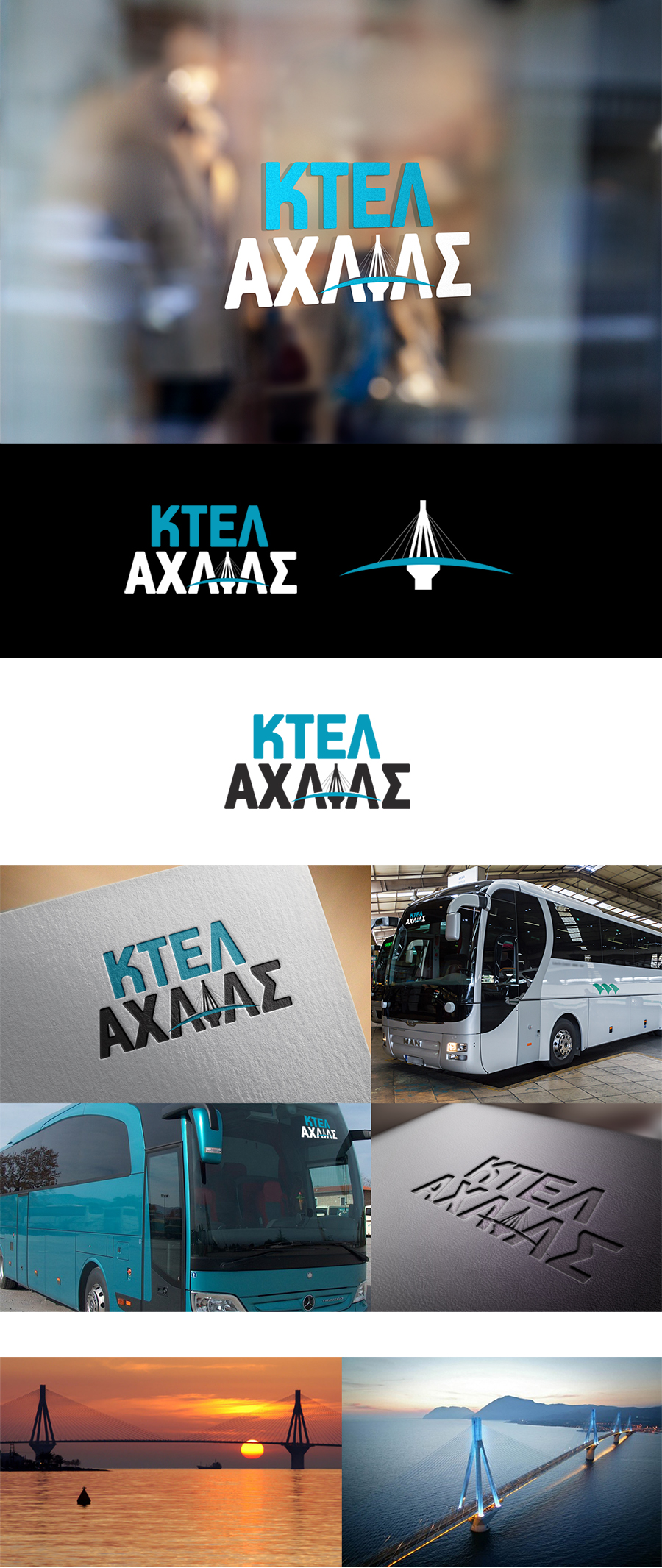Logo design proposal for KTEL of Achaia Prefecture to be used on the intercity buses.
Ktel Achaias
The business KTEL of Achaia Prefecture SA provides high-quality, safe and high-speed passenger transport services, i.e. it provides passenger and baggage services on pre-defined routes, inside and outside the prefecture of Achaia, with a point of departure or destination for the city of Patra. At the same time, it carries out emergency services covering the need of the local market mainly through the tourist agency it maintains. It has parcels and envelope transport agents directly and safely, utilizing the fleet of vehicles onthe routes that operate. The Achaia Prefecture KTEL covers one of the largest routes, with four main routes: Patras-Athens, Patra Thessaloniki, Patra-Kalamata and Patras- Ioannina, a dense network within the Prefecture of Achaia and regular lines for the rest of Greece.
Proposal: The aim was to design a logo, which will be used in the form of a sticker on the front side of the buses. It’s purpose is to let the public know the Prefecture to which the bus comes from That’s why we decided, on the design process, not to include a bus icon, symbol or design on it. Instead we focused on the most known point of Achaia, the bridge of Rio-Antirio. The intercity buses connect the areas of Achaia to the rest Prefectures and cities . So we wanted to pass the feeling of connection throw the A letters combined with by the bridge design. Also the bridge design works as the letter I of the word AXAIA.
The Rio - Antirio Bridge
The Rio–Antirrio Bridge, officially the Charilaos Trikoupis Bridge, is one of the world's longest multi-span cable-stayed bridges and longest of the fully suspended type. It crosses the Gulf of Corinth near Patras, linking the town of Rio on the Peloponnese peninsula to Antirrio on mainland Greece by road. The 2,880-metre-long (9,449 ft) bridge (approximately 1.8 miles) dramatically improves access to and from the Peloponnese, which could previously be reached only by ferry or via the isthmus of Corinth in the east. It opened in August 2004. Charilaos Trikoupis was a 19th-century prime minister of Greece who suggested building a bridge in the current location but the wealth of Greece at the time didn't permit its construction. The bridge was planned in the mid-1990s and was built by a French-Greek consortium led by the French group Vinci SA which includes the Greek companies Hellenic Technodomiki-TEV, J&PAvax, Athena, Proodeftiki and Pantechniki. The lead architect was Berdj Mikaelian. Site preparation and dredging began in July 1998, and construction of the massive supporting pylons in 2000. With these complete in 2003, work began on the traffic decks with the steel fabrication being carried out by Cleveland Bridge U.K. and supporting cables by Freyssinet. On 21 May 2004 the main construction was completed; only equipment (sidewalks, railings, etc.) and waterproofing remained to be installed.

